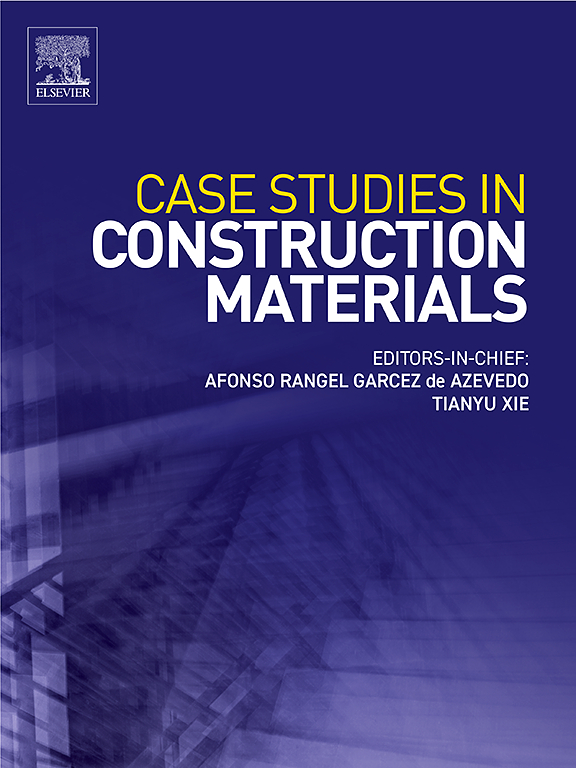TRM与FRP:水泥基基质能否取代有机粘结剂用于增强低等级混凝土梁的抗弯加固?
IF 6.6
2区 工程技术
Q1 CONSTRUCTION & BUILDING TECHNOLOGY
引用次数: 0
摘要
由于环境暴露、设计缺陷和维修不善导致混凝土结构老化,旧屋的修复变得越来越重要。纤维增强聚合物(frp)在结构加固方面得到了广泛的研究和应用,但也存在一些局限性,如基材不相容、极端温度下性能差、对水分敏感等问题,这些问题在低等级混凝土和砌体中尤为明显。作为替代方案,纺织增强砂浆(TRM)以水泥基砂浆取代frp中的有机基质,已成为一种有前途的解决方案。这项工作的目的是比较两种基质的结构性能,当应用于弯曲加强梁与相同数量的复合增强(钢或碳纺织品)。为此,用低质量混凝土制作的12根三分之一比例梁(1.5 m跨度)在四点弯曲下进行了测试。以trm改造梁为例,设计了一种定制的胶凝砂浆,对其进行了表征,并将其用作复合基体。结果表明,TRM复合材料显著提高了承载能力和延性,特别是当使用钢纺织品时,使其成为传统FRP系统的可行替代方案。研究结果强调了TRM作为一种持久、兼容且具有成本效益的加固方法的潜力,提高了其在修复破损混凝土基础设施方面的适用性。这些结果为TRM在结构修复中的应用提供了越来越多的知识体系,并为未来在建筑领域的研究和实际应用提供了有价值的见解。本文章由计算机程序翻译,如有差异,请以英文原文为准。
TRM versus FRP: Can cement-based matrices replace organic binders in the flexural strengthening of reinforced low-grade concrete beams?
The rehabilitation of aging housing estates has become increasingly critical due to the deterioration of concrete structures from environmental exposure, design deficiencies, and poor maintenance. Fibre Reinforced Polymers (FRPs) have been extensively studied and applied for structural strengthening but exhibit limitations such as substrate incompatibility, poor performance under extreme temperatures, and moisture sensitivity—issues particularly pronounced in low-grade concrete and masonry. As an alternative, Textile Reinforced Mortar (TRM), which replaces the organic matrix in FRPs with cement-based mortar, has emerged as a promising solution. The objective of this work is to compare the structural performance of both matrices when applied in flexural strengthening of beams with the same amount of composite reinforcement (steel or carbon textiles). For that aim, twelve one-third scale beams (1.5 m span) fabricated with low quality concrete were tested under four-point bending. For the case of TRM-retrofitted beams, a custom-designed cementitious mortar was designed, characterized and used as composite matrix. The results indicate that TRM composites significantly improve load-bearing capacity and ductility, especially when steel textiles are employed, making it a feasible alternative to traditional FRP systems. The findings underscore TRM’s potential as a durable, compatible, and cost-effective strengthening method, advancing its applicability in the rehabilitation of deteriorated concrete infrastructure. These results contribute to the growing body of knowledge on the application of TRM in structural rehabilitation and offer valuable insights for future research and practical applications in the field of construction.
求助全文
通过发布文献求助,成功后即可免费获取论文全文。
去求助
来源期刊

Case Studies in Construction Materials
Multiple-
CiteScore
7.60
自引率
19.40%
发文量
842
审稿时长
63 days
期刊介绍:
Case Studies in Construction Materials provides a forum for the rapid publication of short, structured Case Studies on construction materials. In addition, the journal also publishes related Short Communications, Full length research article and Comprehensive review papers (by invitation).
The journal will provide an essential compendium of case studies for practicing engineers, designers, researchers and other practitioners who are interested in all aspects construction materials. The journal will publish new and novel case studies, but will also provide a forum for the publication of high quality descriptions of classic construction material problems and solutions.
 求助内容:
求助内容: 应助结果提醒方式:
应助结果提醒方式:


